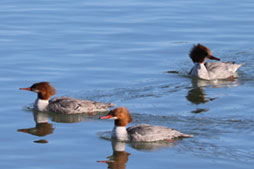NYC’s Urban Wildlife Map
You’re almost ready for your first animal sighting! Just click on any point on the map and information about one of NYC’s wild animals will show up in this box.
Official Website of the New York City Department of Parks & Recreation
Meet your wild neighbors!
Nearly 8.5 million New Yorkers share their streets, backyards, waterfront, parks, and beaches with hundreds of species of wild animals. The city's 30,000 acres of parklands are prime real estate for wildlife in search of food, shelter, and places to raise their families. So don't be surprised if you see a hawk sitting at your bus stop, or deer and coyotes strolling through your local park—after all, they are New Yorkers, too!
Most of NYC’s wildlife is not dangerous; however, maintaining a safe distance is the best way to protect your safety and the safety of our wild neighbors. If you see an injured animal, leave the animal where it is, give it some distance, and call 311. If there's any immediate danger, please call 911. Visit WildlifeNYC to learn more about local urban wildlife and how best to coexist with them, and to report coyote, deer, fox, and raccoon sightings.
Like all New Yorkers, wildlife living in urban areas love to explore their city. Use our wildlife calendar to learn about what’s happening with your wildlife neighbors each month, and find parks where you might be able to better see them in action.
NYC’s wildlife is all around us! Check out the best places to safely observe wildlife this month. Use the controls to select other months to see what nature has in store.
Key
![]() Mammals
Mammals
![]() Birds
Birds
![]() Amphibians and Reptiles
Amphibians and Reptiles
![]() Fish and Horseshoe Crabs
Fish and Horseshoe Crabs
![]() Insects
Insects
You’re almost ready for your first animal sighting! Just click on any point on the map and information about one of NYC’s wild animals will show up in this box.
It may surprise some people to learn that there are coyotes living in New York City, but some of the first coyotes to arrive in the area moved to the Bronx from parts of New York State in the 1990s, so these fascinating animals have been New Yorkers for a while now. You are most likely to see or hear coyotes during mating season, which occurs from January through March. Coyotes look a bit like domestic dogs, although with a flatter forehead, more pointed snout, and longer legs. If you see a coyote—they can be observed during the day—don’t panic. Although they have a fearsome reputation, most coyotes are not dangerous to people. However, their lives and your safety depend upon coyotes remaining naturally wary of people, so please observe and appreciate them from a distance, and please do not feed them. Learn Five Easy Tips for Coexisting with Coyotes
Best Viewing Locations: Van Cortlandt Park, Pelham Bay Park

Because the trees are bare, winter is the best time of year to spot owls that live high up in our trees. Owls can be seen perched in their nests starting as early as January or February. They are mostly active at night, but sometimes also hunt during the day. Northern saw-whet, great-horned, screech, and barred owls are among the most common species of owls in NYC. Learn more about owls in our parks
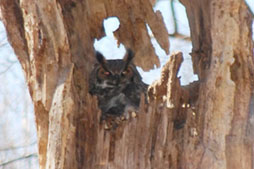
Bald eagles—the national birds of the United States—spend their winters in woodland areas along waterways. As you walk through densely wooded areas in New York City, like Inwood Hill Park, look up into the trees—you might spot a bald eagle roosting or scoping out its prey. Like red-tailed hawks, bald eagles perform aerial displays during courtship that involve locking talons and spinning through the air. Their breeding season begins in the late fall and generally ends around February. Eagles usually nest through April and chicks typically leave the nest by the end of July.
Best Viewing Locations: Conference House Park, Willow Lake at Flushing Meadows Corona Park, Inwood Hill Park, Riverside Park
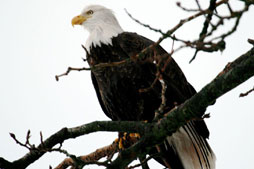
It may be hard for New Yorkers to believe, but our local winters are comparatively warm compared to areas further north where harbor seals generally spend their time. As a result, seals will migrate south to our ice-free waters during winter's coldest months for easier fishing. this makes February an amazing time of year to see harbor seals in New York Harbor. Seals can be tricky to spot though—you may be surprised to find that what looks like a rock or bottle floating on the water in the distance is actually a healthy seal. The best places to spot a seal are on remote shores or on sandbanks during the day, and they can usually be seen in New York from November through May. When spring approaches, and the water warms, seals return to their homes up north.
Best Viewing Locations: Orchard Beach, Lemon Creek Park, Coney Island Beach, Rockaway Beach
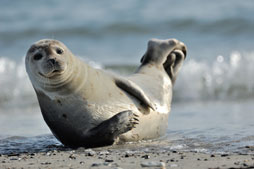
Opossums can be found across the city, but are rarely spotted because they live pretty solitary lives except during breeding season. You are most likely to encounter opossums during their breeding season, which begins in February and lasts through July. Opossums can give birth to between one and three litters each year, giving birth to six to nine babies per litter.
Best Viewing Locations: Morningside Park, Central Park, Prospect Park, Marine Park, Sunset Park, The Greenbelt, Bloomingdale Park, Van Cortlandt Park
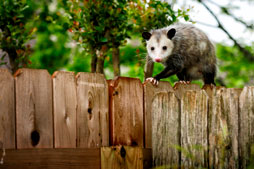
Eastern gray squirrels are seen in our parks year-round, but they are especially active during the spring, when they will come out of their nests—called “dreys”—to dig up nuts. Nuts not uncovered may become trees! Female squirrels also give birth to litters of one to five juveniles in March and throughout early summer. Baby squirrels are pink and hairless, and they rely on their mother’s milk to grow. The babies leave the nest after about seven weeks. Learn more about NYC's squirrels
Best Viewing Locations: Central Park, Fort Greene Park, Union Square Park, Von Briesen Park, Crotona Park, Madison Square Park, Washington Square Park, Forest Park, City Hall Park
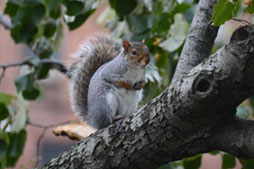
These fish-loving hawks spend most of their time near bodies of water, and generally build their nests along coastlines for easy access to their favorite food. They return to the same nest every year in the springtime to mate and nest, and if you walk through our large shorefront parks at the right time of year, you can usually see osprey pairs nesting in very tall trees and on utility poles.
Best Viewing Locations: Marine Park, Pelham Bay Park, Freshkills Park, Jamaica Bay
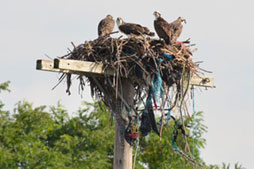
Peregrine falcon courtship rituals take place in early March, and are amazing to witness. Males will soar to high elevations and then plummet downward, circling, and rolling in an acrobatic display meant to entice the females. Nesting begins in late March, when falcons begin creating scrapes in the ground or taking over other species' nests. In NYC, peregrine falcons prefer nesting on tall structures like bridges and buildings. From late March to late April, the female lays three to four eggs. The chicks hatch after 34 days, and they begin to fly about five to six weeks later. Peregrine falcons return to their nesting grounds on a yearly basis.
Best Viewing Locations: Riverside Park, Under the George Washington Bridge in Fort Washington Park, Ferry Point Park

Each summer, New Yorkers have a special opportunity to share the beach with these treasured, New York State endangered shorebirds. Each spring and summer, piping plovers use the beaches in the Rockaways as a breeding and nesting ground. In NYC, they breed at Rockaway Beach, Breezy Point, and Fort Tilden. Plovers arrive at their breeding grounds in early and mid-March and begin laying their eggs at the beginning of NYC's beach season, in May and June. Eggs begin to hatch about a month later. NYC Parks manages one of the nesting grounds at Rockaway Beach each summer.
Best Viewing Locations: Rockaway Beach
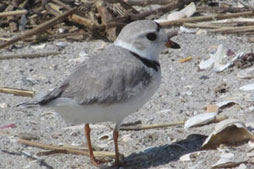
You can see red-tailed hawks in NYC year-round: in the forest, on the window ledges of tall buildings, and even sitting by your bus stop. In early March, red-tailed hawks mate and their courtship involves elaborate aerial displays in which the male and female will occasionally lock talons in mid-air and spiral downwards, then pull away. Sometimes during these displays, the male will entice the female with prey.
Best Viewing Locations: Central Park, Riverside Park, Washington Square Park, Pelham Bay Park, McCarren Park, Prospect park, Tompkins Square Park, Flushing Meadows Corona Park, High Rock Park, St. Nicholas Park, Crotona Park

Woodcocks are also called timberdoodles. The presence of woodcocks in our woodland areas in March is a sign that their spring migration to the north has begun—and a sign that spring migration for many other birds will start soon! Woodcocks stay close to the ground, and are slightly camouflaged, but if you look closely you can sometimes see them walking around the forest floor and poking their long bills in the soil in search of earthworms to eat. In the springtime, woodcocks perform aerial displays of courtship—males will fly upward in wide spirals, then zig-zag down to land near the females.
Best Viewing Locations: Central Park, Van Cortlandt Park, Prospect Park, Blue Heron Park
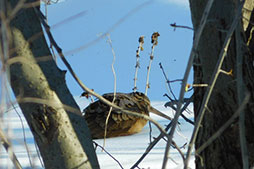
New York City is situated on what is known as the Atlantic Flyway, a migratory path that many eastern species of birds follow during spring and fall migration. As they follow the coast north, many birds look to our parks for food, water, and shelter. Grackles, robins, and red-winged blackbirds, among others, can be seen in the North Woods of Central Park gathering material for their nests. Learn more about birding at NYC Parks
Best viewing locations: Central Park, Prospect Park, Van Cortlandt Park, Clove Lakes Park, Highland Park
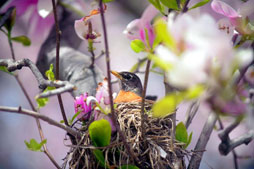
Alewife herring start to return to the Bronx River, NYC’s only freshwater river, in April to mate and lay eggs. Spawning fish can be seen swirling in small groups. The adults return to the ocean after spawning; whereas, young herring leave for the ocean come fall. A fish ladder was added to the 182nd Street Dam at the Bronx River Greenway to help the fish travel upstream to discover more places where they can spawn and find food. Thanks to the efforts of the Bronx River Alliance, partners, and friends who've helped restore the Bronx River, we're seeing herring return each year to spawn.
Best Viewing Location: 182nd Street Dam at the Bronx River Greenway
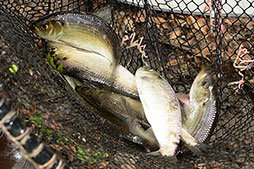
Cave-dwelling bats, like the little brown bat and big brown bat, go into hibernation in the fall when the weather cools. They emerge again around April as spring approaches, and can sometimes be spotted at dawn and dusk flying among the trees and feeding on insects like mosquitoes. The most common species of bats found in New York are little brown bats, which belong to the family of mouse-eared bats. Bats, like all other wildlife, should always be enjoyed and viewed from a distance.
Best Viewing Locations: Central Park, The Greenbelt

One of the only purple martin colonies in New York City can be found in Lemon Creek Park. These birds, which live in open woodlands, are the largest in the swallow family. In April, they return to NYC, where Lemon Creek Park provides man-made birdhouses specifically for the purple martins to nest in the springtime.
Best Viewing Location: Lemon Creek Park

April is nesting season for red-tailed hawks, so you may spot them around the city gathering their building materials. Nests are made of twigs and built high above the ground in trees, on building ledges, and on bridges. Both parents incubate the eggs for 28 to 35 days. The chicks hatch in late April and early May.
Best Viewing Locations: Central Park, Riverside Park, Washington Square Park, Pelham Bay Park, McCarren Park, Prospect park, Tompkins Square Park, Flushing Meadows Corona Park, High Rock Park, St. Nicholas Park, Crotona Park

While raccoons do enjoy NYC's nightlife, seeing one during the day does not mean they are sick or injured—they can often be spotted resting up in trees or on elevated platforms while the sun is out. In April, raccoons give birth to two to five babies, called kits. If you come across a raccoon, please observe and admire them from a distance, and don’t feed them your food. We can harm them by offering them ours.
Best Viewing Locations: Central Park, Prospect Park, Flushing Meadows Corona Park
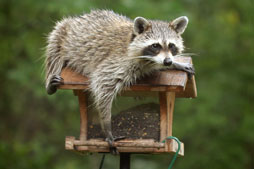
Spotted salamanders are introverts; you’ll rarely ever encounter one in New York City because they spend most of their time under the leaf litter on the forest floor. April is the best time to spot them—this is when they begin leaving their homes to mate in pools of water formed from the first warm rains of spring.
Best Viewing Locations: Alley Pond Park, Cunningham Park

Spring peepers are the earliest frogs you’ll see, or more likely, hear, as the weather starts warming up. Hear the spring peeper chorus at Alley Pond Park's kettle ponds, the marsh in the northwest woods of Van Cortlandt Park, and at High Rock Park.
Best Viewing Locations: Alley Pond Park, Van Cortlandt Park, High Rock Park, Canarsie Park

Humpbacks and other whales are migrating north to the Gulf of Maine. You can potentially spot one at Rockaway Beach or at Staten Island's beaches using strong binoculars or a spotting scope.
Best Viewing Locations: Rockaway Beach, Ocean Breeze Fishing Pier at Ocean Breeze Park
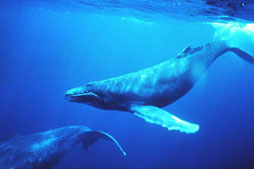
Coyotes begin birthing litters of four to six pups in April. Young coyotes stay close to home until they are ready to venture out on their own, usually in late fall to early winter, from October to January. If you see a young coyote, don't panic. Maintain a safe distance and use these Five Easy Tips for Coexisting with Coyotes to keep yourself and the coyote safe.
Best Viewing Locations: Van Cortlandt Park, Pelham Bay Park

Canada geese breed in March, and their chicks begin hatching in May. If you visit NYC's shorefront parks, ponds, and lakes during this time, you might see some yellow-green goslings paddling through the water with their parents, with one parent leading the way and the other parent following closely behind. The young leave the family after one year.
Best Viewing Locations: Harlem Meer in Central Park, Wolfe's Pond Park

Horseshoe crabs are not actually crabs, but ancient creatures more closely related to spiders and scorpions. In May and June, you can spot horseshoe crabs coming up on our shores during high tide to mate and lay eggs. Eggs typically hatch within 14 to 30 days.
Best Viewing Locations: Marine Park, Staten Island's east shore parks, Jamaica Bay, Orchard Beach at Pelham Bay Park
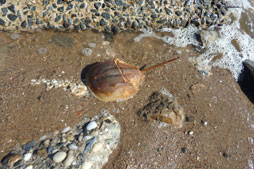
Painted turtles are one of the most common turtle species in North America, but that doesn't make them any less enjoyable to watch as they swim lazily thorough our parks' ponds and sunbathe on nearby rocks. These turtles enjoy the arrival of the warmer weather as much as most New Yorkers, so keep an eye out for these relaxing reptiles as the summer months roll in.
Best Viewing Locations: Baisley Pond Park, Prospect Park, Harlem Meer in Central Park, Morningside Park, Clove Lakes Park
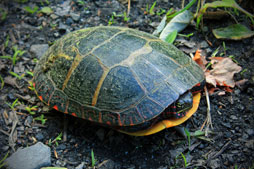
As early as May, white-tailed deer can begin giving birth to between one and three fawns. Fawns are usually unable to keep up with their mother for the first month, so you may spot a fawn hiding in bushes or tall grasses while their mother goes off to feed. The fawns are perfectly safe, and have not been abandoned, so observe and appreciate them from a distance.
Best Viewing Locations: Greenbelt, Pelham Bay Park, Van Cortlandt Park, Conference House Park

American bullfrogs are the largest frogs in North America. They live in freshwater lakes, ponds, and slow-moving streams. Female bullfrogs lay tens of thousands of eggs from June through August. The eggs hatch into tadpoles within a week, and can remain that way for one to three years depending upon the conditions of their home. When mating, the male attracts the females with a deep vocalization that sounds like “jug-o-rum.”
Best Viewing Locations: Central Park, Prospect Park, Forest Park, Blue Heron Park, The Greenbelt, Clove Lakes Park, Van Cortlandt Park

From late June into July, Canada geese begin changing out of their winter outfits, through a process called molting, where they shed and replace old and worn flight feathers. During this time, they are unable to sustain continuous flight, so you might see them biding their time at your local park. And if you don't see them, you'll likely hear them—Canada geese are very vocal. They honk when they are flying, or even just hanging out in the water, and on land.
Best Viewing Locations: Harlem Meer in Central Park, Wolfe's Pond Park
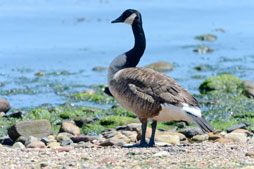
In June and July, while most New Yorkers are heading towards the ocean to escape the heat, diamond-backed terrapins can be spotted traveling in the opposite direction, retreating from the water onto New York City's beaches and marshes to lay their eggs. That's not to say they aren't affected by the summer weather—the sex of diamond-backed terrapin babies is determined by the temperature. Cooler nests will produce males while warmer nests will produce females. Be sure to appreciate these amazing animals from a distance, as diamond-backed terrapins will abandon their nests if they are disturbed while laying eggs.
Best Viewing Locations: Freshkills Park, Marine Park, Jamaica Bay
Freshwater turtles, including red-eared sliders, snapping turtles, and painted turtles also emerge at this time to look for areas to dig and lay eggs.

Bats mate before going into hibernation from October through March. Baby bats, called pups, are born around June or early July. Bats, like all other wildlife, should always be enjoyed and viewed from a distance.
Best Viewing Locations: Central Park, The Greenbelt

Young red-tailed hawks have fledged and may be seen hanging around on the ground while they are learning to fly. Look for their brown tail feathers to identify them as juveniles, and please observe and enjoy them from a distance—they are very independent youngsters.
Best Viewing Locations: Central Park, Riverside Park, Washington Square Park, Pelham Bay Park, McCarren Park, Prospect park, Tompkins Square Park, Flushing Meadows Corona Park, High Rock Park, St. Nicholas Park, Crotona Park

Eastern Gray squirrels are the unofficial mascot for NYC's parks, by nature of how easily they can be spotted in most parks, especially during the summer months. Eastern gray squirrels squirrels give birth twice a year, in early spring and summer, and baby squirrels are ready to leave their nests and explore the neighborhood after just seven weeks. Learn more about NYC's squirrels
Best Viewing Locations: Central Park, Fort Greene Park, Union Square Park, Von Brisen Park
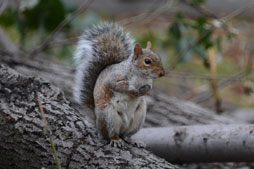
Every spring, piping plovers, a New York State endangered species, migrate to their summer home of Rockaway Beach, where they lay eggs and raise their chicks. Plover chicks start to be able to fly in July. And as summer comes to an end in August, the plovers begin to migrate down to wintering grounds in South Carolina and the Bahamas.
Best Viewing Location: Rockaway Beach

In July, you can watch juvenile alewife 'popping' in the Bronx River. This is a feeding behavior that involves a leap out of the water to capture insects as they emerge. Come fall, juvenile alewife leave their spawning grounds and join the adults out in the ocean.
Best Viewing Location: 182nd Street Dam at the Bronx River Greenway

Bald eagles lay eggs in early spring. In July, the chicks will be ready to spread their wings around the neighborhood.
Best Viewing Locations: Conference House Park, Willow Lake at Flushing Meadows Corona Park, Inwood Hill Park, Riverside Park
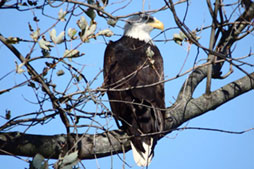
As summer draws to a close, beach season for most New Yorkers is coming to an end. Not for piping plovers, though. In August, after a full summer of breeding and nesting at Rockaway Beach, local piping plovers will begin their migration south to wintering grounds in South Carolina and the Bahamas.
Best Viewing Location: Rockaway Beach

Red-backed salamanders lay eggs under rocks, logs, and leaf litter from June to July, and young red-backed salamanders begin to hatch in August and September. Young salamanders can sometimes be seen foraging for food with adults when the leaf litter they spend most of their time under dries up during hotter summer months.
Best Viewing Locations: Wolfe's Pond Park, Seton Falls Park, Inwood Hill Park, Blue Heron Park

New York City is a prime location for birding, as it is located on the Atlantic Flyway, a route that birds all along the Atlantic Coast tend to follow during their fall and spring migrations. In late September, our avian summer residents begin to migrate to their homes in the south. Birds from as far north as Canada can be seen flying through our parks, or stopping by for food and rest. Whether you are an experienced birder or a beginner, the fall migration is the perfect time to pick up a pair of binoculars to discover all the amazing birds traveling through the city.
Best places by borough: Central Park, Prospect Park, Van Cortlandt Park, Clove Lakes Park, Highland Park

In August, you can see monarch butterflies fluttering around in pollinator gardens, meadows, and open fields where late summer-blooming wildflowers grow. In September, just before the cold weather approaches, monarch butterflies, including their newborns, journey through our parks on their 2,100-mile trip to Mexico, where they remain for the winter.
Best Viewing Locations: Central Park, Prospect Park, Forest Park, Blue Heron Park, Conference House Park
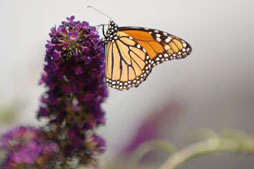
Coyotes, like most New Yorkers, enjoy exploring their surroundings. Young coyotes begin to leave their dens in October, and are generally more visible during this time as they venture out into the world. If you see a coyote—they can be observed during the day—don’t panic. Although they have a fearsome reputation, most coyotes are not dangerous to people. However, their life and your safety depend upon coyotes remaining naturally wary of people, so keep a safe distance and please do not feed them. Learn Five Easy Tips for Coexisting with Coyotes
Best Viewing Locations: Van Cortlandt Park, Pelham Bay Park

Red-backed salamanders breed from October to December. During this time, some breeding pairs can be spotted together. During the breeding season, males have more swollen snouts and longer legs than the females. Red-backed salamanders spend most of their time in damp areas beneath objects like rocks and logs, and in small underground burrows.
Best Viewing Locations: Wolfe's Pond Park, Seton Falls Park, Inwood Hill Park, Blue Heron Park

Breeding season for white-tailed deer, known as the rut, generally takes place from October to January. Deer are especially active—and aggressive—during this time. While you have an increased chance of spotting one during this time, be sure to observe and enjoy them from a distance.
Best Viewing Locations: Greenbelt, Pelham Bay Park, Van Cortlandt Park, Conference House Park

Before the cold weather arrives, eastern gray squirrels visit their favorite trees to gather food to put away for the winter. It’s the perfect time to see squirrels climbing up trees and scurrying around in leaves, looking for snacks to bury underground.
Squirrels are very capable of finding healthy foods by themselves, so please do not feed them. Feeding squirrels can teach them to approach humans for their food, and they do bite! Learn more about NYC's squirrels
Best Viewing Locations: Central Park, Fort Greene Park, Union Square Park, Von Briesen Park

It may be hard for New Yorkers to believe, but our local winters are warm compared to areas further north where harbor seals spend most of their time. As a result, seals will migrate south to our ice-free waters during winter's coldest months for easier fishing. Seals begin to arrive in the NYC area in November, and can be seen throughout the winter and spring before returning north. The best places for viewing them are on remote shores or on sandbanks during the day, but be sure to keep your eyes peeled—seals can be tricky to spot, and what looks like a rock or bottle floating on the water in the distance can sometimes be a healthy seal poking its head through the water.
Best Viewing Locations: Orchard Beach, Lemon Creek Park, Coney Island Beach, Rockaway Beach

In November, young opossums who were born toward the end of the breeding season will become independent and disperse from their mother, as most of them do once they are 100 days old. Opossums are mostly solitary animals, living alone except during the breeding season.

The breeding season for red foxes begins in December and continues through March. Red foxes can start mating at one year old. Although they have a fearsome reputation, most foxes are not dangerous to people. However, their life and your safety depend upon foxes remaining naturally wary of people, so please observe and enjoy from a safe distance, and please don't feed them.
Best Viewing Locations: Van Cortlandt Park, Alley Pond Park
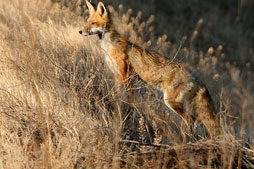
Many species of waterfowl fly into New York City for the winter. Birds including hooded mergansers, ruddy ducks, green-winged teals, northern pintails, ring-necked ducks, snow geese, and American wigeons can be found in parks with water bodies that do not completely freeze. A great place to view a variety of waterfowl is Jamaica Bay Wildlife Refuge in Queens.
Best Viewing Location: Jamaica Bay Wildlife Refuge, Highland Park, Baisley Pond Park, Marine Park
